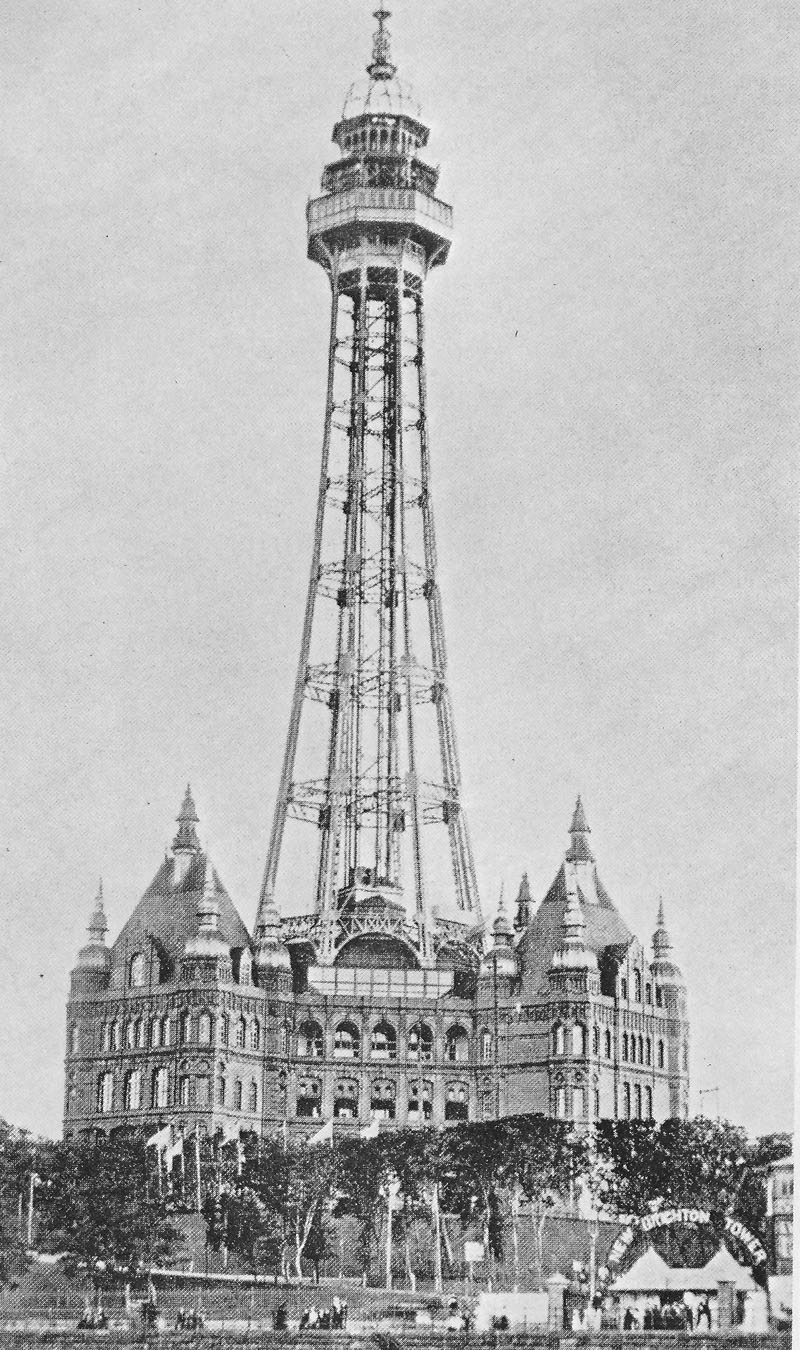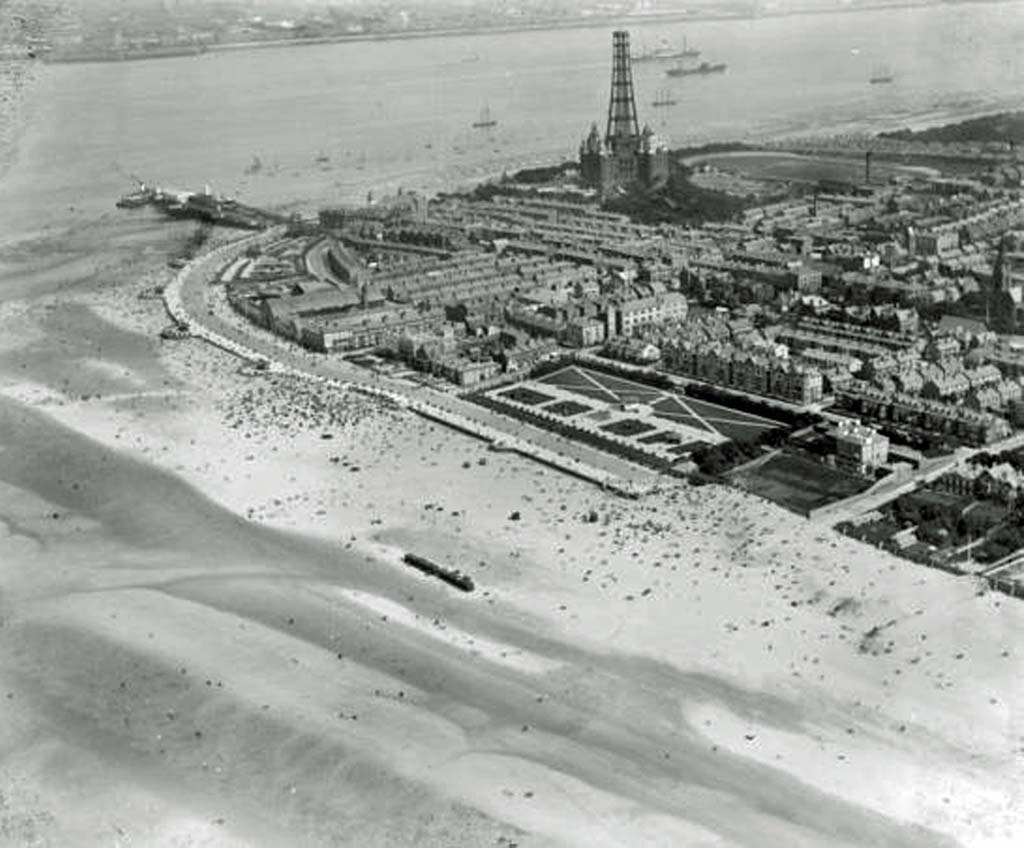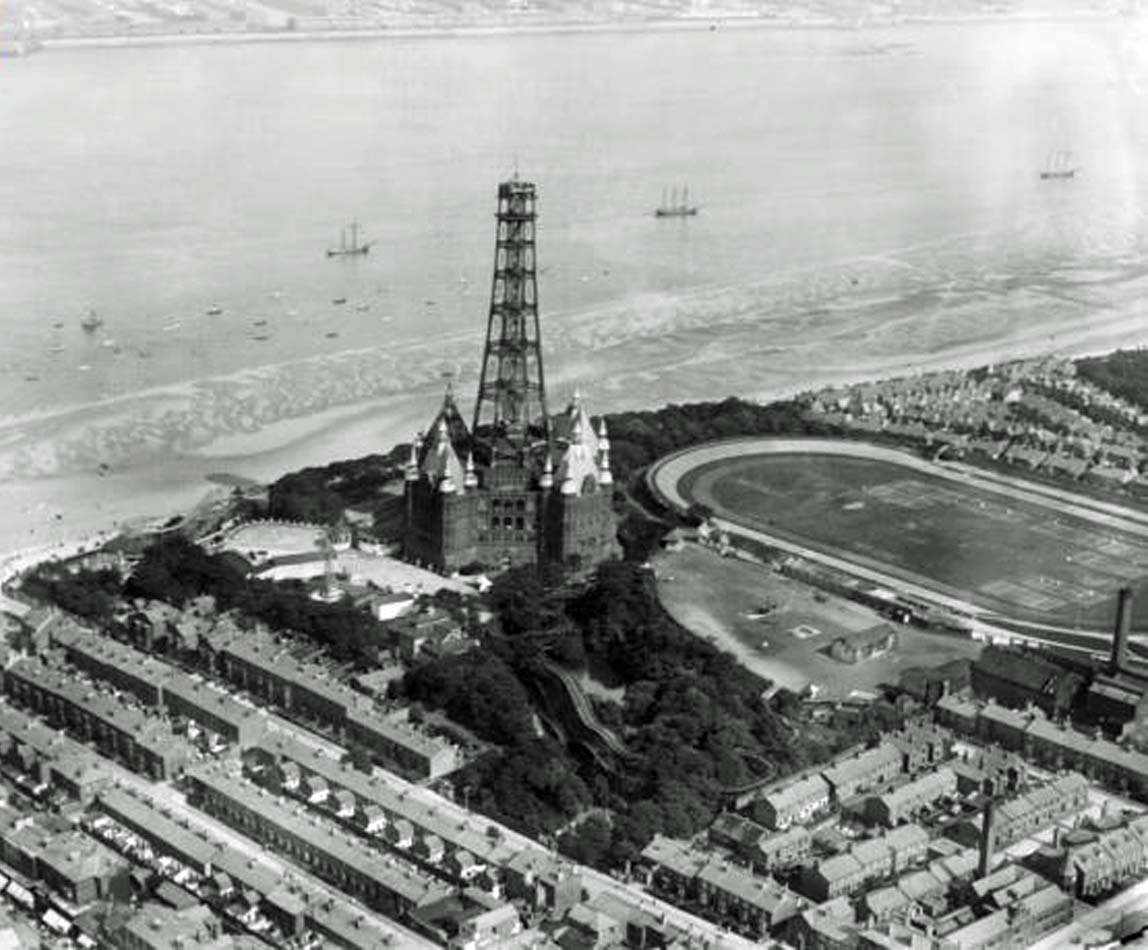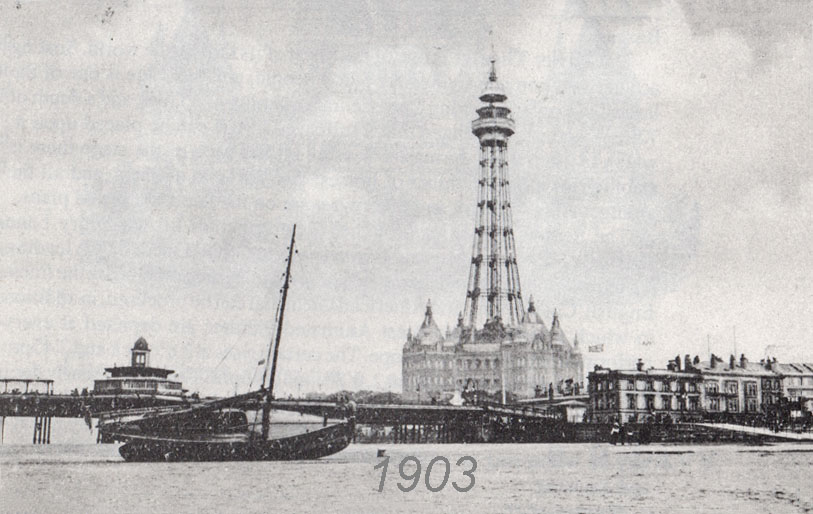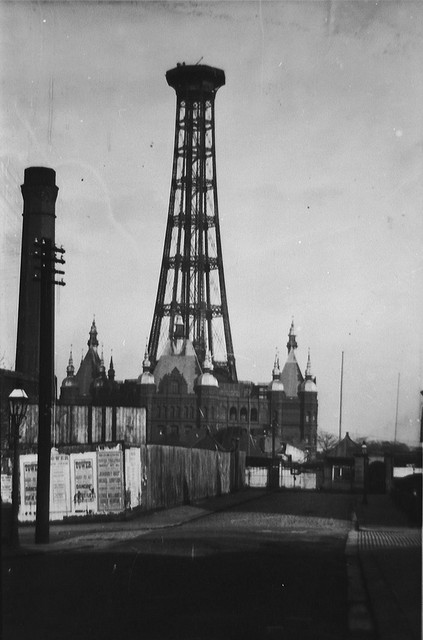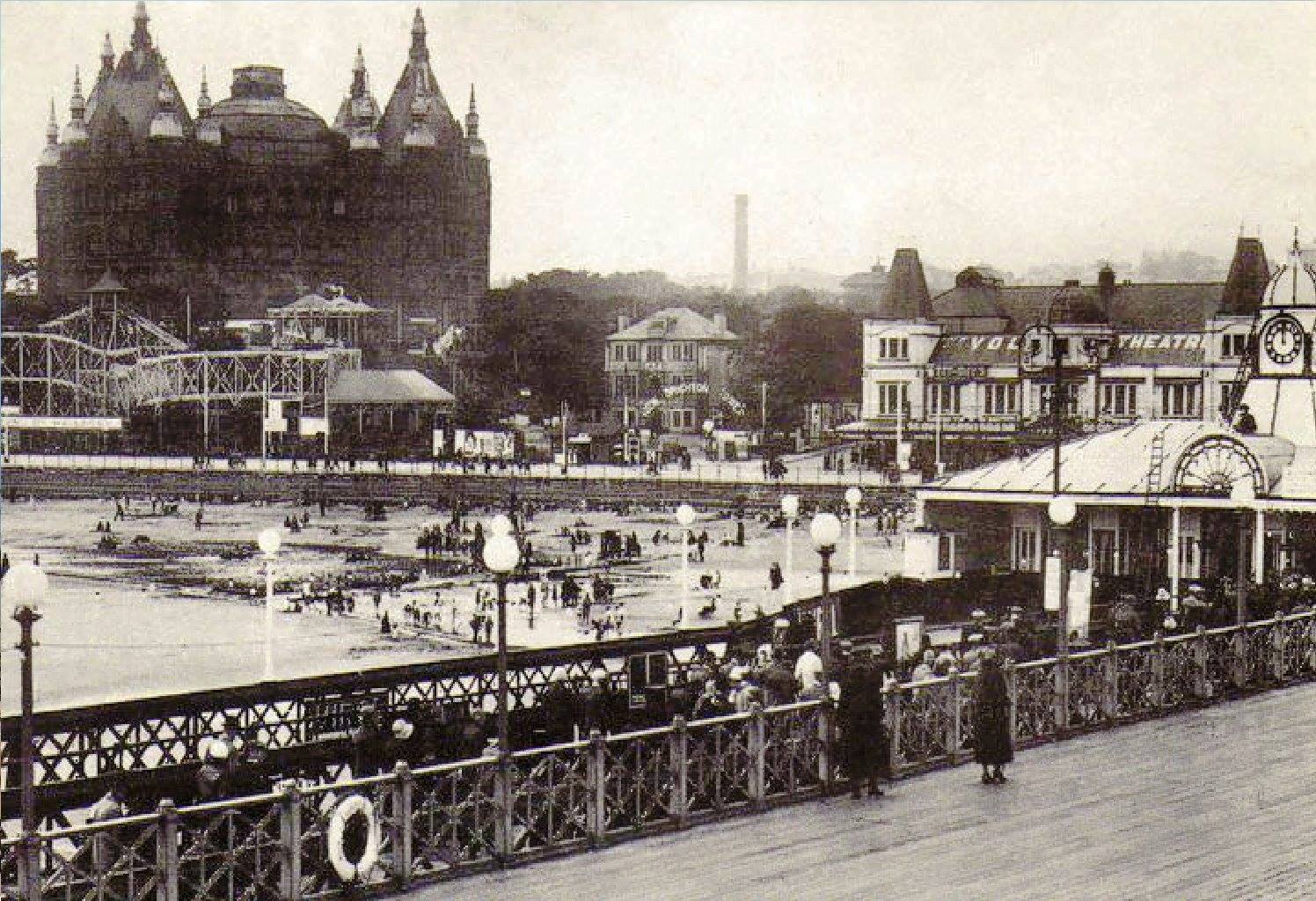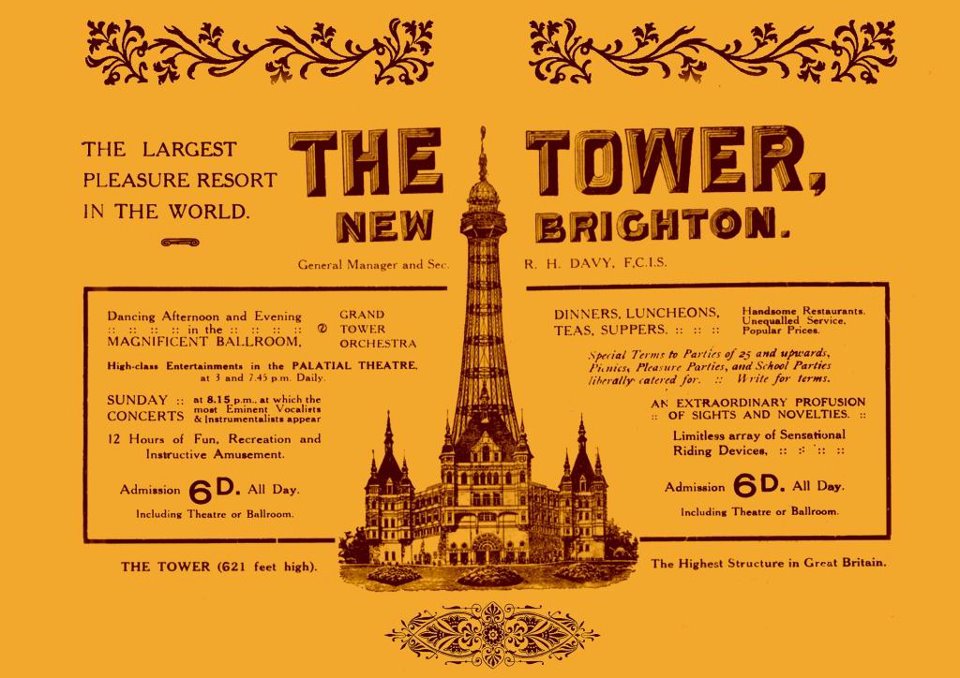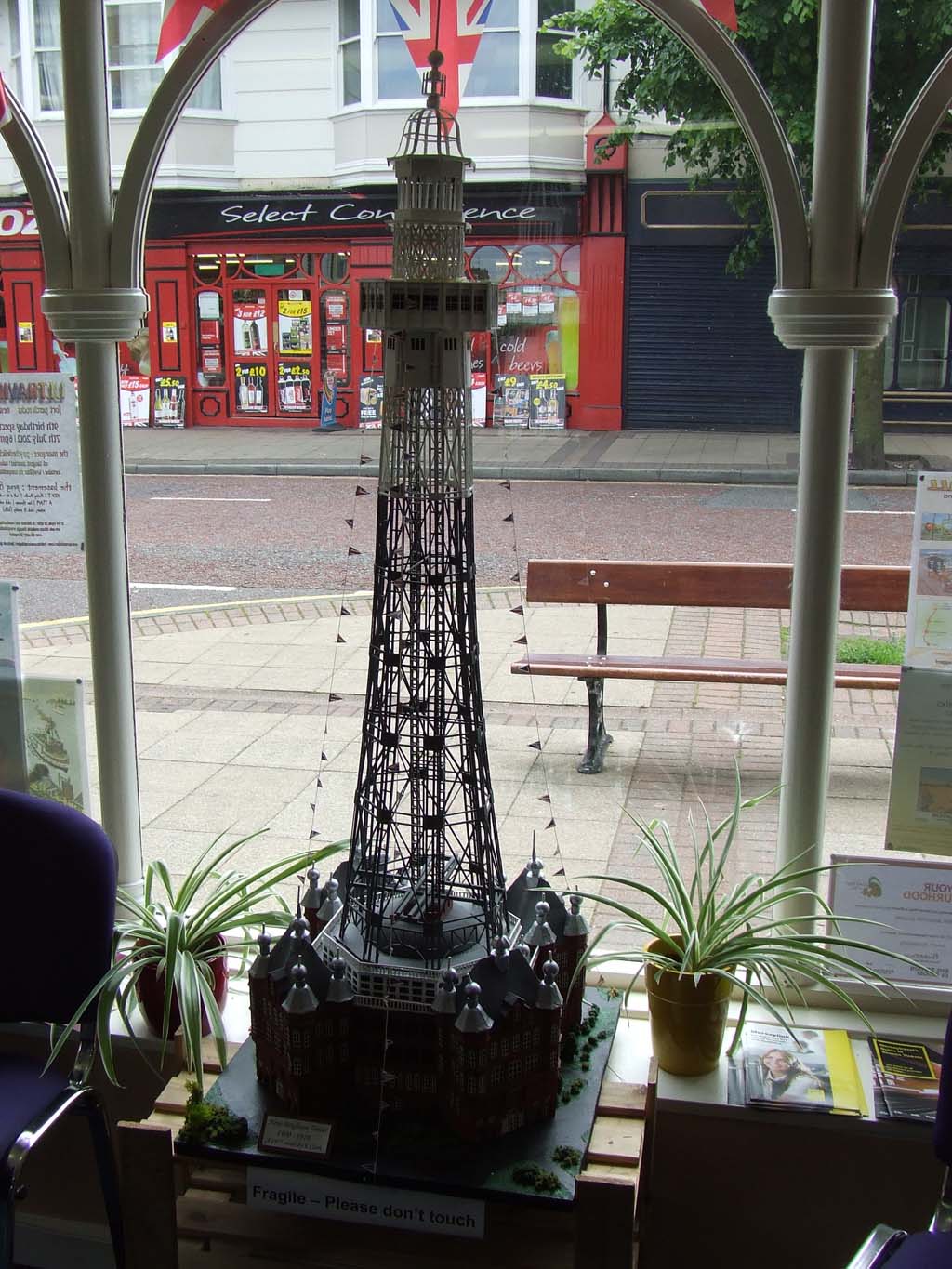
In the window of the Information Centre in
Victoria Road is this 1977 model of New Brighton Tower
superbly made by Ken Clarke
Tower Fire
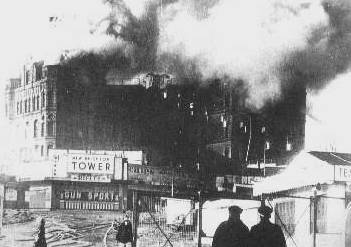
| The New Brighton Tower caught fire on Saturday
5 April 1969. The call was received at 05.08hrs. via the Police
Headquarters. The manager of the Tower and his staff had left the
building at about 8.30pm after a routine check (the stage area was not
included). The roof of the Tower had been open to the public on the
Friday for the first time that year with access by means of the Chair
Lift which had been created in 1960 and operated from the ground to the
roof. The New Brighton Coxswain had been awakened by the cracking and
banging caused by the fire but after checking all was well in the
street, he returned to bed. Police Constable Edward Brimage was on
patrol in Victoria Road at the time and he smelt smoke and set about
looking for the fire. He called for assistance and a search was made of
Victoria Road and Tollemache Street and by the time that they reached
Egerton Street, they discovered that the Tower was on fire in the stage
area West tower of the building. It was then that the Fire Brigade was
called. The first appliance to arive was driven by Dave Liston, followed
by a second, driven by Walter Peach, the Station Officer. He went to
look at the situation and he then climbed the steps to the car park at
the higher ground. No sooner had he reached the top when a huge section
of the building collapsed. Had he stayed down he would have been killed
by the fall of bricks. It was believed that the seat of the fire was in
the stage and the loft. The Brigade had a Pump, a Pump Escape and a
Turn-Table Ladder at the scene as well as the general purpose van. |
| Large bellows of smoke was pouring out of the
windows. The Officer in charge radioed: "Make pumps 10 and turntable
ladders 2" and placed the van in the car park. The Officer went down the
steps that led from the car park to the lower level, made a
reconnaissance of the situation and returned to the car park. He heard a
crumbling noise and turnd to see the whole of the external wall falling.
He radioed another message: "Make turntable ladders 4." |
The Assistant Division Officer now arrived and
took command at 5.20pm with 20 pumps. The collapse of the wall exposed
the Ballroom and theatre to the open air and allowing the flames to
reach other parts of the building. Things were made worse by the fact
that the Tower Boating Lake had been drained and the Fire Brigade had
difficulty in obtaining water with Marine Lake by the Battery some
distance away. Three relays were put into action. The machines had to
pump up the water to the fire, hydrants also fed the Pumps to fight the
flames and two Turn-Table ladders were brought into action but with the
collapse of the wall it was difficult for the Firefighters. The Chief
Fire Officer, Mr EE Buschenfeld, was now in command and through the lack
of water it was obvious that the Ballroom would be a complete loss.
Parts of the roof began to fall in. There were some compressed oxygen
and dissolved acetylene cylinders in the offices of the fifth floor
which were exposed but luckily no one was hurt with the two blasts.
Firemen had managed to get into the building from the south but the
staircases were impassable due to the debris from the collapsed roof.
The Liverpool Fire Brigade were called in with their heavy water unit.
Soon after seven o'clock there were 25 Pumps at the scene and further
relays were deployed. Further sections of the roof fell in and relief
crews were called in from Birkenhead, Liverpool, Cheshire County and
Lancashire County with over 150 Firemen being at the scene with 20 pumps
and four Turntable Ladders.
Vandalism was the cause |
| Mr Buschenfeld sent for five more Pumps and
surveying the situation and the seriousness of the fire, thinking of his
men, he shouted to them, "I don't want any heroes, let it burn." Lives
of Firemen were more important than bricks and mortar. The promenade was
one mass of Hoes-Pipes and by 9 O'clock fresh crews had to take over but
within half hour the fire was under control with crews working on. It
was the end of the Tower. In all 119 Firemen and 37 Officers had fought
the fire. There were 25 Pumps, four Turntable Ladders, a fire using up
to 313 gallons of petrol,71 gallons of diesel fuel and 36 pints of
engine fuel. By Wednesday the heap of rubble inside had cooled down
sufficiently for an examination to be made but was not possible on
account of the condition of the remaining walls. Soon after the fire,
demolition work started for fear of children who might try to play in
the area with the fairground and grounds being closed off. What caused
the fire is uncertain. The Deputy Fire Chief, Mr Alec Dean, said: "A
thorough investigation of the cause of this fire was made by the fire
department in consultation with the Home Office forensic department and
the Cheshire County Police. After the elimination of the possible causes
it seems that this fire was due to unauthorised entry to the building
and subsequent vandalism or accident in the ignition of the stage area
caused by vandals. There could have been no other cause. Electricity and
gas had been cut off so these were eliminated and there was no other
source. There was a lack of direct evidence to pinpoint vandals but it
is the only source that was left ." |
| The Police had investigated the matter but
nobody would come forward with direct evidence. The official verdict was
'Unknown'. By the Wednesday, the heap of rubble had cooled down
sufficiently but on account of the dangerous condition of the ruined
walls it was not possible to make a thorough examination of-the charred
shell of the building. Some of the blackened red- ricks started to
crumble and steps were taken to have it taken down as soon as possible.
Mr Leon Davies, the managing director of the New Brighton Tower, was
concerned that youngsters who could venture near the site could be
injured or killed. Demolition later took place. |
|
